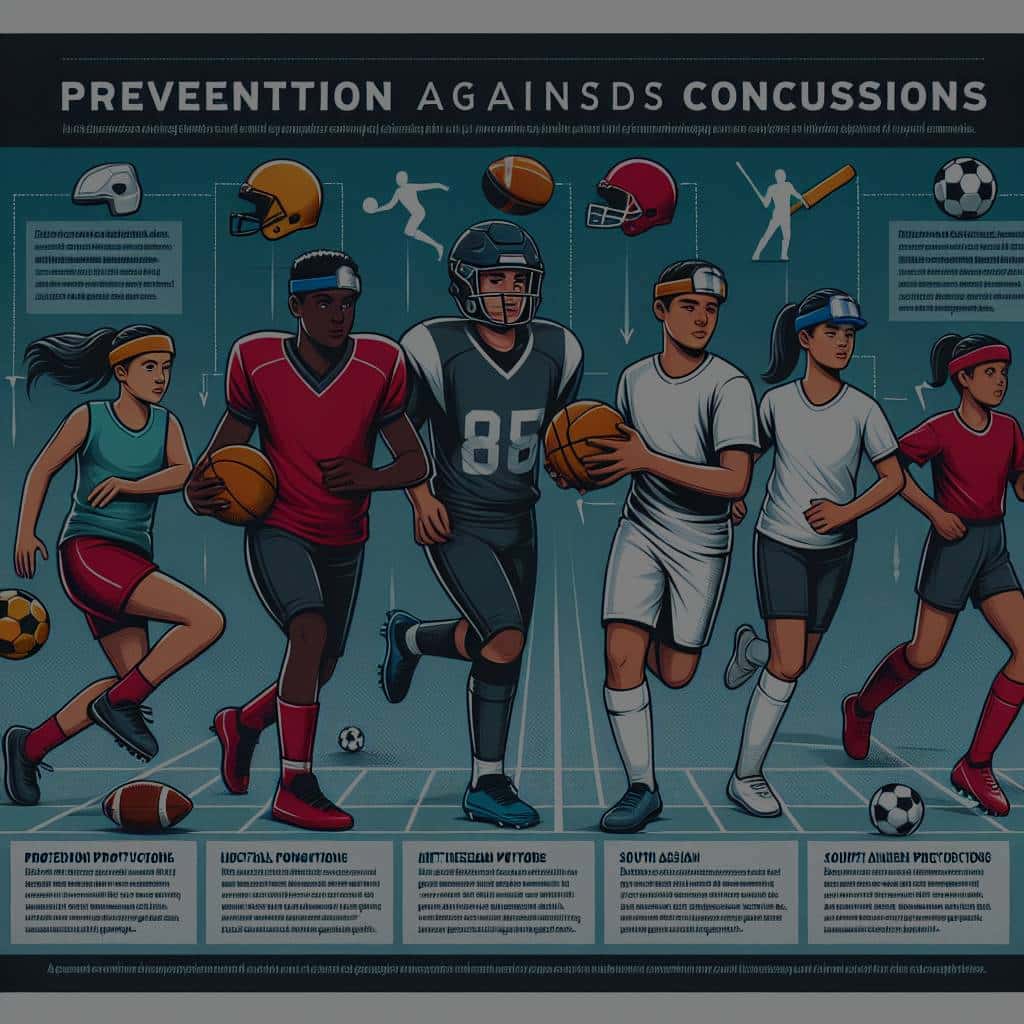How to Reduce the Risk of Sports-Related Concussions in Youth Athletics?

With an increasing number of children and teenagers engaging in competitive sports, concussion prevention is a pressing issue. Concussions can disrupt brain function, producing symptoms such as headaches, dizziness, nausea, and difficulty concentrating, all of which can interfere with daily life. For student-athletes, these effects can also pose difficulties in their academic performance. But fear not, for there are various measures that we can take to reduce the risk of concussion-related injuries in youth sports.
Understanding Concussions in Sports
To begin with, let’s acquaint ourselves with what a concussion is. It is a type of traumatic brain injury (TBI) caused by a blow to the head or body, a fall, or any other incident that shakes the brain inside the skull. It’s crucial to remember that a concussion can occur without a direct hit to the head and can result from a rapid movement that causes the brain to bounce or twist within the skull.
Lire également : What Are the Best Low-Impact Exercises for Pre-Natal Fitness?
In the realm of youth sports, concussions are a common occurrence, especially in high-contact sports such as football, basketball, and hockey. According to PubMed, a trusted source of medical journals, recent studies have shown an increasing trend in sports-related concussions among youth athletes.
Risk Factors for Youth Athletes
It’s paramount to understand the risk factors associated with sports-related concussions in youth. Age, sport type, and gender all play a role in the likelihood of sustaining a concussion.
Lire également : How Can Nature-Based Therapies Alleviate Symptoms of PTSD in Veterans?
Younger children, particularly those in elementary and middle school, are at a higher risk. Their brains are still developing, making them more susceptible to injury. High-impact sports like football, rugby, and lacrosse also have a higher incidence of concussion. Lastly, studies have shown gender discrepancies with female athletes reportedly having a higher incidence of concussions than their male counterparts.
Being aware of these factors allows us to better prepare and protect our young athletes from potential injuries.
Recognition and Immediate Response
Recognizing a concussion when it happens and responding appropriately is a vital first step in reducing the impact of the injury. Symptoms of a concussion might not be apparent immediately and can develop over several hours or even days.
Common symptoms include headache, confusion, dizziness, sensitivity to light or noise, and difficulty concentrating or remembering. In youth sports, it’s often the responsibility of the coach or school athletic trainer to recognize these signs.
The Centers for Disease Control and Prevention (CDC) recommends the “Heads Up” approach, which mandates immediate removal from play, rest, and medical evaluation for any player suspected of having a concussion.
Implementing Safety Measures in Sports
To further reduce the risk of concussions, it’s essential to implement safety measures. This includes enforcing rules that prohibit dangerous play, using protective gear, teaching proper techniques, and promoting a culture of safety.
Strict enforcement of rules against aggressive and dangerous behavior in sports can help reduce the prevalence of injuries. Concurrently, using protective gear, including helmets and mouthguards, can help mitigate the effects of collisions or falls.
For sports like football, teaching athletes the proper tackling technique can reduce the risk of head injuries. It’s also important to foster a culture of safety within the team, where athletes feel comfortable reporting symptoms and are encouraged to prioritize their health over the game.
The Role of Preseason Education and Baseline Testing
Preseason education programs and baseline testing are additional strategies that can help manage concussions in youth sports.
Youth athletes, their parents, coaches, and school staff should be educated about the risks of concussions, symptoms, immediate response protocol, and the importance of reporting symptoms.
Baseline testing, done before the sports season starts, is a type of neurocognitive test that provides a pre-injury overview of healthy brain function. This can be useful for doctors in the event of a suspected concussion, as it allows them to compare the post-injury state to the baseline measurements, aiding in diagnosis and treatment planning.
While concussions in youth sports are a serious concern, a proactive approach emphasizing awareness, immediate response, safety measures, and education can effectively reduce their frequency and impact.
Promoting Protective Equipment and Safety Practices
Preventing concussions in youth sports requires the dedicated effort of everyone involved, from the athletes themselves to their parents, coaches, and school administrators. A key aspect of this responsibility involves promoting the use of protective equipment and enforcing safety practices.
Helmets, mouthguards, and other protective gear are particularly important for athletes participating in high-contact sports such as football, hockey, and rugby. According to a study mentioned in the CrossRef PubMed, the correct use of protective equipment can significantly reduce the risk of head injuries. However, it’s crucial to emphasize that no helmet or protective gear can completely eliminate the risk of a concussion, as these injuries can also result from the brain being shaken within the skull.
Apart from using protective equipment, certain safety practices can also help limit the risk of concussions. These include, for instance, encouraging athletes to limit head-to-head contact, teaching athletes to recognize and report any concussion symptoms, and fostering a culture where safety is prioritized over winning. In high school sports, especially, fostering such a culture can be challenging but is absolutely critical for the overall well-being of young athletes.
Furthermore, coaches and athletic trainers play a crucial role in instilling safety practices. They should be knowledgeable about concussion symptoms, immediate response protocols, and injury prevention strategies. Regular training sessions can keep this information fresh and relevant, enabling coaches to respond effectively when an injury occurs.
Conclusion: A Comprehensive Approach to Reduce Concussions in Youth Sports
In conclusion, reducing the risk of sports-related concussions in youth athletics is a multifaceted challenge that requires a comprehensive approach. Understanding the nature of concussions, recognizing risk factors, and promoting an immediate response to potential injuries are all crucial. Additionally, instilling safety measures in sports, educating all stakeholders, and endorsing the use of protective equipment can significantly help in concussion prevention.
Sports play an integral part in the development of children, contributing to their physical health, social skills, and self-esteem. However, the risk of traumatic brain injuries like concussions must be effectively managed to ensure the safety of young athletes. With collaborative efforts from athletes, parents, coaches, and school administrators, we can aim to create a safer sporting environment where the focus is not just on winning, but also on protecting the health and well-being of our youth.
Remember, in youth sports, the most important victory is not in the scoreboard, but in the safe and healthy development of our young athletes. After all, each of these young individuals is more than just a player – they are the future leaders of our society.
